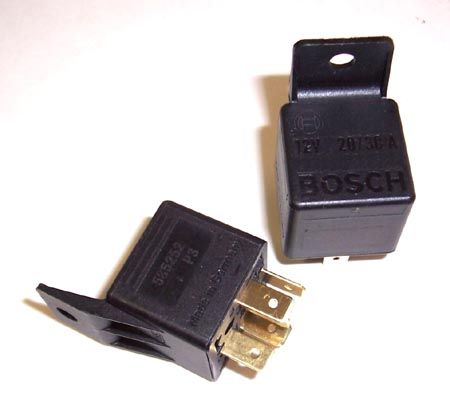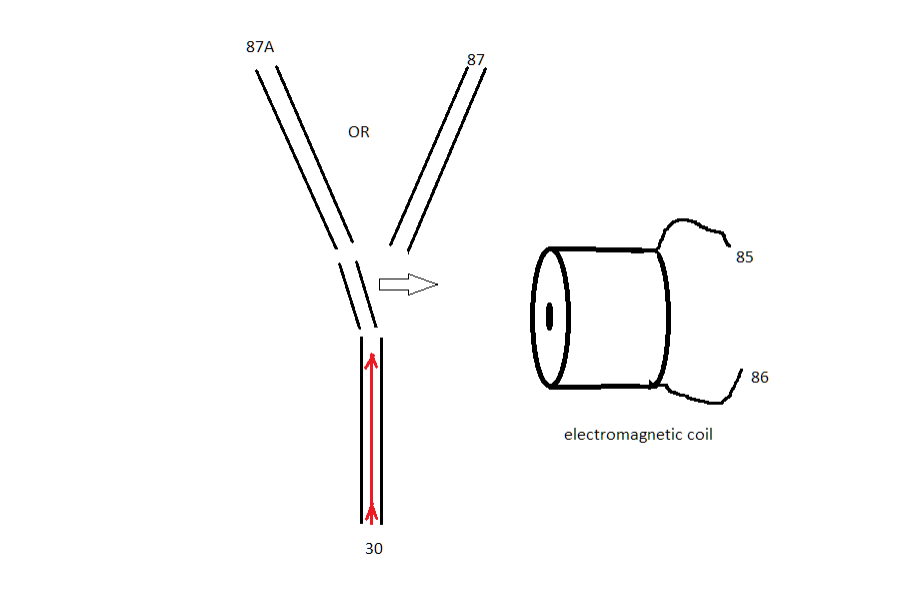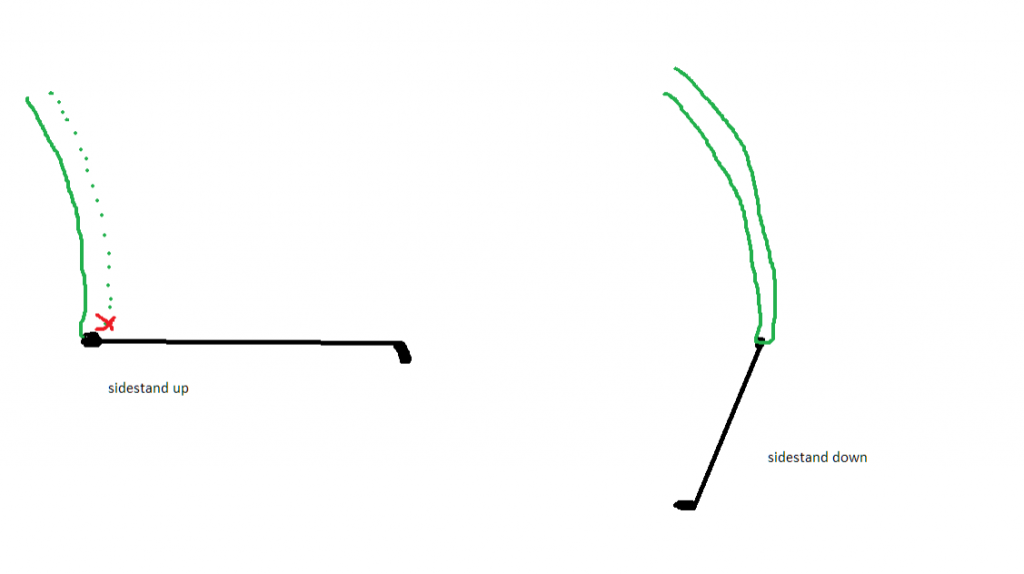I’ve been wanting to do a proper bypass on the side stand switch (that will allow you to use the side stand with the engine running IN NEUTRAL, but not in gear) for some time now, but we are rapidly approaching triple-digit heat here in North Texas, and I’m getting lazy in my middle age, so bear with me….
I will post details/instructions in as few sections as I can. I do feel that I should write up a short primer on relays for those that are unfamiliar with them. That will be the first part.
Anyway, as with any modifications, disclaimers are needed:
-do this at your own risk. If you are not comfortable cutting and splicing wiring you might want to hold off on this one. You will need basic wring tools, like wire cutters, wire strippers, and some means of connecting wires like crimpers or a soldering iron. If you can’t make a good quality connection, don’t do it. Simply twisting wires together and wrapping with tape is NOT a good connection. It will fail. And most of all do not use the ‘wire nuts’ that are used in home electrical wiring. They are not designed for an environment that vibrates, shakes, and moves like a vehicle does.
Relay basics:
A relay is nothing more than an electro-mechanical switch. Inside the relay is a coil, that when energized, becomes an electromagnet. This magnet pulls a metal lever from one electrical contact position to another. That’s it…no magic. No mystery. When you hear a relay ‘click’ you are hearing the contact lever moving from one position and clicking when it contacts the next one.
While there are many different types of relays –some with multiple switches- for our purposes we will work with a SPDT (single pole, double throw) type. These are the most common.
They will typically look like this, but some may not have the built in bracket on the body.

There are many brands available. Bosch has been regarded as the industry standard for years, but I believe they are now branded as ‘Tyco’. Another good brand is Potter& Brumfield.
The bottom of the relay is where the ‘contacts’ are located. They are the metal prongs that stick out. The layout of these is standardized and labeled on most SPDT relays. There are five contacts and they are numbered: 85, 86, 87, 87A, and 30.

85 and 86 are the contacts for the coil. This is what powers up the electromagnet and makes the click. Putting 12V positive on one (85) and 12V ground on the other(86) is all that is needed to power up the relay…and the amount of current it takes is tiny -in the milliamps. This is how some motorcycles can have a tiny micro switch on the handlebars controlling things that normally require large amounts of current. All the switch has to do is power the relay, and the relay powers the light or the starter. I am a firm believer in using relays to control current instead of the switches themselves. While both (switches and relays) can fail, it is easier to unplug a relay and plug in a new one than it is to rewire a wire harness or replace a switch because they couldn’t handle the current flow.
The other three contacts : 30, 87, and 87A and the ones that handle the electrical flow and do the switching. The easiest way to visualize it is think of a fork in a road. The coil is the device that directs the flow from one side to the other

Normally (when the relay in not energized) the contacts of 30 and 87a are connected. When the coil gets power, the magnet pulls the switch from 87a to 87. It is easier to understand the relay when you think of the coil contacts (85, 86) as just being the on/off switch for the relay. That way you only deal with three contacts: The one at the bottom (30) is the common contact amd the other two (87, 87a) are where 30 is connected to when the relay is either on or off.
The side stand switch
On the recent UCE bikes the side stand switch must be up for the engine to start and run. This is fine sometimes but can be a pain at other times. Some people simply unplug the switch harness, but that leaves the possibility of riding off with the stand in the down position, which could be a problem and cause a wreck when you lean into a left turn. The solution is to allow the bike to run with the stand down BUT ONLY IN NEUTRAL. Most modern bikes operate this way, but the engineers at Royal Enfield overlooked this. Maybe they were concerned with prolonged idling on the side stand leading to oil starvation at the oil pump…I don’t know. If someone out there more familiar with where the oil pump pickup is on the UCE motors can help out that would be great. But I digress…
Anyway, we have to trick the bike into thinking the side stand is up when it’s not, but only when the bike is in neutral. This is where knowing how relays work comes in. You see, the circuit for the side stand is open when the stand is up, and completed when it is down. Kinda like this:

This is why unplugging the switch works; when it is unplugged, the bikes fuel cut off system never sees the completed circuit when the stand goes up. Even though the stand is down, the ‘brain’ of the system never sees the signal telling it that the stand is down. So how do we duplicate this? We use a relay to open the circuit so that the bike does not see the ‘stand is down’ signal when certain conditions are met. What conditions would those be?....igniton switch on and bike in neutral. Thankfully we have a wire coming out of the engine to tell us when the bike is neutral (that’s how the green light on the instrument cluster works) and those two conditions will be the triggers for the relay coil to energize. This way if the bike is running and on the side stand, and the rider puts it in gear without raising the side stand, the engine will die. When the neutral indicator goes out, the relay goes back to its default position and the bike operates as it normally does. When it’s in neutral, the relay is energized and it simulates the condition of disconnecting the side stand switch. This way, if the relay ever fails, the modification will revert the wiring back to factory situation. A ‘fail-safe’, if you will.
I will cover the actual install and bike wiring in the next section of this thread. Hopefully I get to it pretty quickly this week.